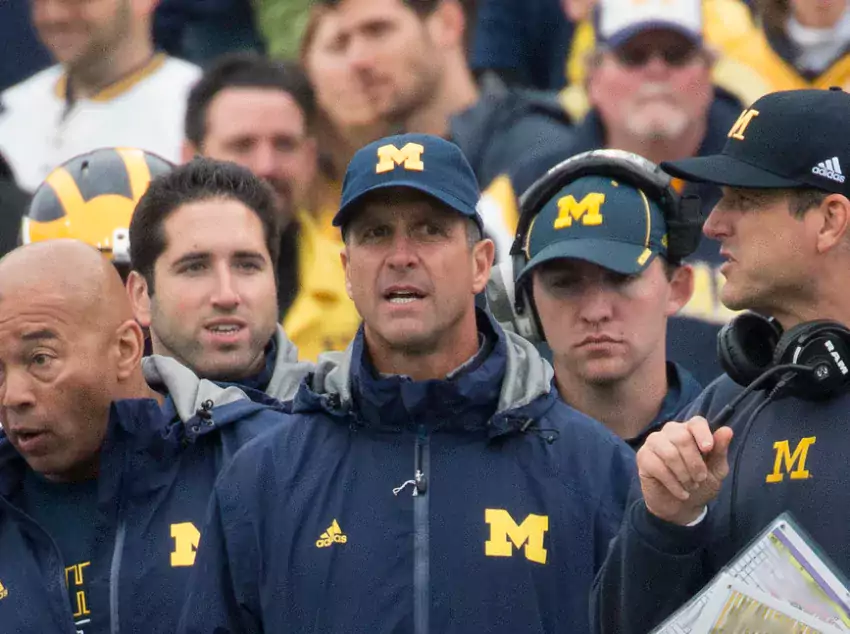
Neck Sharpies: The Ravens 5-1-5 Defense

 This article has a sponsor: Neck Sharpies is sponsored by HomeSure Lending, and when I say sponsored I mean I get texts from the guy saying “You need to write a Neck Sharpies.” The guy is Matt Demorest, who's been busy lately because like passing down defensive fronts these days if your rate still has a "4" or a "3" at the start of it you're doing it wrong. It usually takes Matt and his people about 5 minutes to know if a refi makes sense, and if it doesn't they'll tell you. You know the guy, and you know from a bunch of other readers that he does a better job and charges way less than the mills.
This article has a sponsor: Neck Sharpies is sponsored by HomeSure Lending, and when I say sponsored I mean I get texts from the guy saying “You need to write a Neck Sharpies.” The guy is Matt Demorest, who's been busy lately because like passing down defensive fronts these days if your rate still has a "4" or a "3" at the start of it you're doing it wrong. It usually takes Matt and his people about 5 minutes to know if a refi makes sense, and if it doesn't they'll tell you. You know the guy, and you know from a bunch of other readers that he does a better job and charges way less than the mills.
-----------------------------------------
Happy Signing Day. Michigan today received three new letters of intent for three guys on the defensive tackle spectrum. This comes two weeks after naming Baltimore Ravens assistant Mike Macdonald one of their co-defensive coordinators, presumably the one who’ll get to shape the next iteration of Michigan’s defense.
George Rooks (currently 6-4/260), Ike Iwunnah (6-4/300) and Rayshaun Benny (6-5/275) join a class that already signed a projected SDE/DT type in Dominick Giudice (6-4/250), and three guys on SDE->3-4OLB spectrum in TJ Guy (6-4/240), Keshawn Bennett (6-4/220), and Tyler McLaurin (6-2/210). Is there a defense that can use all of these guys? Well yeah, but only one team I know runs it at the highest levels of football: the Baltimore Ravens.
The Amoeba Defense
The NFL and Michigan have the same problem: how do you stop modern NFL quarterbacks and NFL receivers who can beat anybody one-on-one. There are lot of ideas out there. Ohio State does whatever it takes to get the kinds of athletes who can beat anybody one on one. Iowa State turned their middle linebacker into a hybrid safety who starts at the safety level. Indiana has gone zone blitz crazy. Army and some SEC schools use a front that takes away B gaps and options the option to slow everything down. Iowa and Northwestern and Wisconsin are committed to Cover 2 systems that require years of tutelage. Everybody’s experimented with changing personnel, turning their 4-3s and 3-4s into 4-2-5s, 2-4-5s and 3-3-5s, and turning those into 3-2-6s, 4-1-6s, and whatnot.
The Ravens will tell you they’re a 3-4 defense, or a 3-3-5 nickel. But where other modern 3-4s (eg Alabama) have bowed to modernity by converting OLBs into hybrid safeties, the Ravens have been doubling down on the defensive line-iness of their front five while turning their linebackers into quasi or total DBs.
The approach is working. Despite cutting the one superstar they built the thing around in 2019, Baltimore was first in the league last year in old fashioned passing defense, and ninth in Football Outsiders’ fancystat DVOA (10th versus the pass). With that guy they were fifth (fourth vs the pass) in 2019. More interestingly, they have been doing it without hanging their hat on run defense—they were 12th this year, and 29th in the NFL in 2019.
That is by design. Counter to how everyone in football was taught, the Ravens built their defense starting with stopping the pass, and then figured out how to fit versus the run. They do it by blitzing more than anybody in the league, and blitzing a wider variety of players than anybody in the league. They call it the Amoeba defense, because it can shift into any look. It’s complicated, sure, but it’s also hell on quarterbacks, who are regularly unsure of their reads or throw to the wrong ones.
Macdonald was the linebackers coach, not the mastermind, of those defenses. That would be the previous linebackers coach, Don “Wink” Martindale, who was promoted in 2018. But Coach Mac was there as the concepts were implemented, and it’s a good enough bet that Jim Harbaugh chose Macdonald because he’s been Wink’s guy.
[After THE JUMP: Does Michigan’s roster have what this takes?]
Three Plays, Three Blitzes
Your typical defense starts with some kind of base run formation with a safe base coverage behind it. The Ravens defense starts with blitzing your face off. Here’s their second snap when facing the Chiefs—the NFL’s best offense—on Monday Night Football last year.
I don’t have to explain how this works. Every eligible receiver has a defender covering him in man. Every gap has a blitzer. Unless one of those blockers can take two gaps there will be somebody unblocked.
Let’s look at who’s on the field versus what they’re doing, because it’s interesting how many guys are not in the roles you would imagine:
| CB | SAM | 5-TECH | SS | NOSE | MIKE | 3-TECH | RUSH | FS | Nk | CB | |
|---|---|---|---|---|---|---|---|---|---|---|---|
| Run: | Side | C-Gap | B-Gap | A-Gap | A-Gap | Safety | B-Gap | C-Gap | Edge | Alley | Side |
| Pass: | X(m) | Rush | Rush | Rush | Rush | RB/hole | Rush | Rush | TE(m) | Cov4 | Cov4 |
The cornerbacks are in coverage and the front five are rushing their gaps and edges, but the strong safety is playing the role of a blitzing WLB, the free safety is being a Viper, and their MLB is playing safety, freed from gap responsibility so he can get the depth that ultimately breaks up the play.
(Downside: the free safety taking that tight end got a hands-to-the-face penalty.)
This blitzing gets in the quarterback’s head, and they like to make sure of it by messing with expectations. The next play they set up again with defensive backs high over every wide receiver, a sign that they’re playing some kind of underneath coverage. This is a run play—a split zone—that should find some room against a second level worried about RPOs and underneath passes. The FS is lazily walking down when the tight end returns to the box, matching numbers. Not until the last second does the cornerback come down as well, stacking the offense’s left side to free up the DE to knife into the run.
Other than the stunt on the frontside there, the Ravens are running the same play: six men attacking the six gaps in the box, with a couple of LBs behind them and Cover Zero (man with no help) behind them. It does show how the Ravens deal with motion across the formation. Clark, the strong safety who initially lines up over the tight end, converts to a linebacker when the TE leaves his side. With the MIKE whipping over to the edge to replace the blitzing safety, the MIKE is now matched on the tight end.
Let’s check in again and see what kinds of jobs everybody’s doing:
| CB | SS | RUSH | 3T | WILL | NT | MIKE | SAM | FS | Nk | CB | |
|---|---|---|---|---|---|---|---|---|---|---|---|
| Run: | Side | Free LB | B-Gap | A-Gap | C-Gap | B-Gap | Edge LB | A-Gap | C-Gap | Alley | Side |
| Pass: | X(m) | RB(m) | Rush | Rush | Rush | Rush | TE(m) | Rush | Rush | Cov4 | Cov4 |
Glance across that list and count the number of players who are actually doing what their nominal position would normally do in a standard defense. You’ve got a free safety thunking a tight end, a strong safety playing inside linebacker, a WLB rushing an open edge, and 3-4 OLBs taking B gaps.
You’ve also got zero deep help for your coverage. That’s a tough spot to be in for the secondary. Just imagine a quick pass to Tyreek Hill, one of slipperiest dudes in the league!
Any NFL QB these days is going to be money at reading your defense before the snap, but Mahomes did not trust Hill to have that much space underneath. That’s the big advantage the Ravens gain from this approach: there are no comfortable reads, and pressure is coming so fast that it’s unlikely the offense is going to be able to find what you left them this time.
I want to move on to the next play to show you why it’s a weakness as well.
This is a passing down so they’ve lifted the NT and rotated in some backups. Note the cornerback playing single-high safety. KC’s offensive coordinator, Eric Bienemy, catches the Ravens in a zone coverage by moving the running back outside and drawing nobody with him. With the cornerbacks all up high like that it’s a fair bet that they’re in a Cover 3, which doesn’t have an answer for quick outs because the curl/flat defenders have to work inside-out to get there.
“C-F” means curl-flat zone
That’s why the Ravens went after super-expensive free safety Earl Thomas in the 2019 offseason; they miss him badly on this play, as replacement DeShon Elliott can’t be in two places at once. Last check-in:
| CB | RUSH | SS | FS | 3-TECH | 5-TECH | DIME CB | MIKE | SAM | Nk | CB | |
|---|---|---|---|---|---|---|---|---|---|---|---|
| Run: | Side | 2-Gap T | QB | Off R | A-Gap | A-Gap | Safety | B-Gap | C-Gap | Edge | Side |
| Pass: | 1/3 | Rush | Hole | C-F | Rush | Rush | 1/3 | Rush | Rush | C-F | 1/3 |
Personnel
People refer to the Ravens base defense as a 3-4 or a 3-3-5. I would argue this a “5-1”:
When you talk about designing a defense, what you are really considering is how to distribute the same work, and we tend to break up that work into speed, size, and decision-making. In the NFL it’s also about where you put your resources. A lot of teams build from the bottom-up, IE build a good defensive line then sprinkle playmakers around the back seven. It’s a proven strategy, and popular, which created a market opportunity for a team willing to start with its defensive backs. That’s what the Ravens have done. PFF in 2019:
While the Ravens allowed their productive pass-rushers to hit the open market, PFF’s Research and Development team was finalizing their thoughts on the actual value of pass-rushers, especially when compared to coverage players. Depending how much you were taught that football is won in the trenches, the results may have been counterintuitive, as strength on the back end proved to be more valuable than getting after the quarterback, and the Ravens’ team-building effort appeared to be following a similar blueprint.
Instead of replacing Suggs and Smith up front, the Ravens made free safety Earl Thomas their key offseason signing, adding to a plethora of riches in the secondary and prompting us to declare the Ravens as the best secondary in the NFL heading into the season. That unit got even better with the midseason acquisition of CB Marcus Peters, who is known for his ability to create turnovers despite giving up his fair share of yards in coverage. The pass-rush group did not get the same glowing remarks, ranking 25th in the preseason rankings as its question marks were hardly answered during the offseason.
The Ravens weren’t putting all that cap space into guys they planned to leave on the bench. They were building a position-less dime defense. We can glance over the guys on the field and interpret their plans.
EXPENSIVE CORNERBACKS
Let’s get the part that Michigan can’t (yet) replicate out of the way: Baltimore has very good cornerbacks. Marlon Humphrey, Jimmy Smith, and Marcus Peters were all first rounders. Peters is one of the most talented guys in the league, Humphrey is an all-around great player, and Smith has a 5-9' guy’s agility in a 6-2 body. They had $22 million, over a tenth of the NFL’s salary cap, tied up in Humphrey and Peters last year, and Smith’s been giving them a deal to play for a contender. And they’re getting their money’s worth by leaving these guys in a lot of space with very little help.
The cornerbacks get involved in the rush game as well (5* 2022 USC commit Domani Jackson would be perfect in this defense, just saying). They also have to be good tacklers in space, because if things go wrong up front they’re often left high and responsible for holding down the gain. That’s in addition to all the normal cornerback things like jamming, getting coverages right, and staying with whatever the NFL throws at them.
FIT: Gemon Green might be able to do some of this, but Michigan would do well to recruit some top-notch corners off of other teams’ rosters this year, and get some five-stars who want to do more than run around the Ohio State secondary until it’s time for NFL scouts to marvel at their athleticism and lament their lack of coaching.
THE DO-ANYTHING SAFETY
Earl Thomas was a big part of their defense in 2019 but his personality issues led to him getting cut before the 2020 season. They’re going to carry a large cap hit next year ($10 to 14 million depending on how quickly the legal things get resolved). For our purposes we can ignore that aspect since Thomas’s signing in 2019 was a huge indication of the Ravens’ thinking when building that defense.
Until 2019, Thomas was the consummate single-high guy, a role he played as consistently as anybody in the league while with the consistently Cover 1 Seahawks. The Ravens pursued him with extra money, surprising experts who thought that was a bit much for a dude you plan to leave back to patrol. What the Ravens saw however were abilities that could be used closer to the line of scrimmage. Thomas could play the deep overhang with his eyes closed; what Baltimore wanted was that experience in a guy they could move all over the field AND play deep safety.
The Ravens will play single-high sometimes, and will play a lot of Quarters. It’s their blitz schemes that add so much variance to a free safety’s day, because he’s constantly replacing somebody called upon to pass rush from an unusual spot. Remember how the cornerbacks get left on an island all the time, AND join in the fun sometimes? When a cornerback does that guess who gets his old job?
Now imagine that guy has to cover tight ends too. The first play above was a stop but DeShon Elliott, Thomas’s replacement, picked up a hands to the face trying to deal with one of the better NFL receiving tight ends.
FIT: Daxton Hill, come on down.
THE NICKELBACK THINKS HE’S A LINEBACKER
Cornerbacks take rotation, however, often putting one of Peters/Humphrey/Smith on the bench. That’s created a lot of snaps over the last few years for Anthony Levine, an undrafted free agent from Tennessee State in 2010 who spent most of the intervening years as a special teamer. In this defense he’s a 5-11/207 hybrid space player. We have met all sorts of Big Ten defensive backs like him over the years: Maryland’s Antoine Brooks, Minnesota’s Antoine Winfield Jr., OSU’s Shawn Wade, ND’s Jeremiah Owusu-Koramoah, and Bama’s Shyheim Carter are the NFL-caliber versions. Shakur Brown of Michigan State, and Bryant Fitzgerald and Marcelino Ball (and 2021 commit Marcus Freeman) of Indiana would be college equivalents. Tyree Kinnell or Josh Metellus would have fared well.
All of those guys are cornerback-ish safeties. You can trust those guys to clover slot receivers, cover wide second-level zones, and react like a linebacker against the run, bodies be damned. While Humphreys can do it all, Levine can do most of it, and that plus the extra beef in the OLBs lets the Ravens get away with using a nickel-shaped guy at linebacker.
FIT: We haven’t seen many of our nickels but it’s not that hard to find this kind of tweener but RJ Moten’s recruiting profile fits the bill.
THE STRONG SAFETY IS A SAVANT
Strong safety Chuck Clark came cheap. A veteran of Virginia Tech’s Quarters system, the smallish Clark hoped to make it to the league as a cornerback, but his combine numbers (4.56 forty) wouldn’t cut it, and the Ravens picked him up as a sixth rounder. He moved into the starting lineup last year when strong safety Tony Jefferson tore his ACL. The Ravens released Jefferson in the offseason and started Clark.
The NFL allows one player to wear the “green dot” which is the one guy allowed a radio in his helmet, and the Ravens give theirs to Clark, one of the few odd teams to not give it to a linebacker. Clark has led the league in defensive back pass rushes both years he’s been the starter. You saw him moving around a ton, playing some linebacker, blitzing, and faking a blitz to find a guy in zone coverage who started on the other side of the formation in the third play.
Also would you guess this guy timing the snap on his blitz is a safety or a linebacker?
FIT: Getting back Brad Hawkins is nice but I don’t think there’s a guy on the roster now who does all the things Clark does. Michael Barrett does a lot of them if they can get away with him doing safety things sometimes. You don’t want him on a slot receiver though. It may be that one of their young vipers, Anthony Solomon or William Mohan, can do true safety things.
THE MIDDLE LINEBACKER IS AN ATHLETE
The Ravens spent two early picks on middle linebackers last year to get some athletes capable of playing some safety and getting to the quarterback quickly on blitzes, sacrificing read-and-react soundness for pure speed and agility. Their first rounder, Patrick Queen, is that in spades. Walter Football on his projection before last year’s draft:
Queen is well suited for pass coverage in today's NFL. He is a smooth mover in the open field with the speed to run vertically down the middle seam. Queen is skilled in zone coverage to flow with the play and cover a lot of ground. After some further development, he could be an asset in helping to cover running backs and tight ends in man coverage. Queen also is a dangerous blitzer who eats up space in a hurry to put pressure on the quarterback. With his speed and athleticism, Queen is a great fit for the modern pro game, as he can be a three-down starter who provides a plus defender in coverage.
As a run defender, Queen uses his sideline-to-sideline speed to shut down perimeter runs. He flashes good vision and uses that to weave through trash to get in position to finish plays. For the next level, Queen needs to get stronger to take on and shed blocks. Downhill runs straight at him can give him problems, and he has a hard time shedding blocks when offensive linemen and some tight ends lock onto him.
Team sources say from an instincts perspective, Queen is still developing, which is a good way to describe it. He flashes some good instincts on some plays with good decision-making on when to fire his gun. On other plays, he can seem to react a hair late and take a false step or two before redirecting. As team evaluators have pointed out, Queen did not play a lot in college, so he does not have a lot of experience. Thus, there is some rawness to Queen and he needs development in the NFL.
The Ravens’ five-man front protects the linebacker from having to take on too many blocks. In return he has to take over a lot of the coverage duties from the OLBs and safeties blitzing willy-nilly. Remember he used his athleticism to break this up.
The WLB has similar characteristics but is used more often in blitzing and can weigh a good 20 pounds more. He also isn’t a starter.
FIT: All of those young LBs Brown recruited to be Devin Bush could be instantly viable in this scheme.
THE OUTSIDE LINEBACKERS ARE DEFENSIVE ENDS
If you visit the 1976 team’s page on the UM Bentley website you’ll see the defense’s starting lineup listed with five linemen:
Go on to the 1977 team and suddenly it’s a 3-4:
What changed? Literally just the position names next to John Anderson and Dom Tedesco. The reason was because Bo was recruiting a guy who wanted to play linebacker, not defensive end. This story comes from Ravens head coach John Harbaugh, who shared it when he and his brother were on hand for an Ann Arbor Pioneer event a few years ago. I don’t know what made me think of that story just now.
It’ll come to me.
Judon’s cap hit was a one-year franchise tag deal that split the DE/LB tag values. He’s a very good pass rusher, but what makes him so valuable to this defense is he’s that kind of pass rusher at a size that wouldn’t be weird for a 3-4 defensive end or 4-3 DT in college. McPhee is even more of a strongside end despite the linebacker tag. They both do drop into coverage, but that’s a changeup. They’re ends.
FIT: Aidan Hutchinson, Gabe Newburg, Taylor Upshaw, and Braiden McGregor were all recruited by Don Brown to be anchors or oversized ends. David Ojabo, Kechaun Bennett, and Jaylen Harrell are 3-4 OLB types we were hoping to grow into ends. TJ Guy in particular projects to be exactly the kind of "is he an SDE or OLB, why not both?" that Judon is.
THE INTERIOR LINEMEN ARE A STANDARD 3-4
The Ravens still use a thicc nose tackle and a bunch of very strong ends who can work in A gaps or B gaps. The big thing for them is taking out linemen so the blitzers can get through free. These two are both DEs on the roster and are lining up in the A gaps, threatening the center with 53’s angle. If you’re the center looking at that, are you tempted to set the protection to the left so you’re not left blocking both of these guys? Well he does, and that gets #48 a free run.
FIT: Linemen are linemen. If Hinton bulks up and Mazi continues his development and Jeter takes another step forward they have three guys who can play now. I don’t know if they have more than that on the roster; Welschof was still undersized for this and some of their build-a-bears were a long way's away, though there are a lot of Anchor bullets in the chamber to hit on a future 5-tech. Giudice, Rooks, and Benny project to those 3- and 5-tech positions, and Ike is a pure nose.
February 3rd, 2021 at 1:41 PM ^
The problem as you identified is a big part of the Ravens defense is built around having the best secondary in the league or close to it (also Tavon Young is the nickel they want but he's been injured).
Michigan doesn't have that, or anywhere close to it. You can't run the ravens defense of the last two years if you can't trust your defensive backs one on one. Its that simple. And we absolutely can not trust our defensive backs one on one.
They also spent the 2019 off season on the defensive line trying to get more interior pass rush in Campbell and Wolfe after getting Derrick Henry'ed in the playoffs (and it worked since they shut down the titans this year despite getting a worse offensive performance). Tough to tell much from the Bills game since its clear the wind made throwing the ball more than 10 yards downfield impossible and killed both offenses which combined for 13 total points.
February 3rd, 2021 at 2:03 PM ^
A couple issues I see:
At the end of this day, this is a college team with less talent, less football experience, and less time to practice than NFLers. We don't have the secondary to run this. Don Brown wished he could run single coverage last year. Additionally, this scheme is complicated as hell. You need your guys to completely understand the scheme before you can implement the window dressing that disguises the scheme. And without the shifting it's easy to pick this apart as long as you can get the ball out before the blitz hits.
February 3rd, 2021 at 4:25 PM ^
We have several young CBs we haven't seen yet, so we don't know for sure that we don't have the secondary to run this. If no one takes over Gray's spot this year I'll really worry, but it's too soon to write them off. We'll see what happens.
February 3rd, 2021 at 2:04 PM ^
Good shit
February 3rd, 2021 at 3:27 PM ^
Love this. Thank you for the great content and making me think about refinancing again.
February 3rd, 2021 at 4:38 PM ^
Enjoyable read.
Playing fast and instinctive always seems to have its benefits.
In this defense is the DL able to play that way or are they also getting more on their plate in scheme responsibilities?
February 3rd, 2021 at 5:49 PM ^
Thanks Seth!
February 3rd, 2021 at 6:48 PM ^
This is great. I love reading -- and trying to comprehend -- this level of analysis. Great job, Seth,
That said, this seems like the blueprint for what we don't want to do with our personnel. To hit what people here have said from another angle, this seems like an all-or-nothing defense, where you're essentially going for a dominant D that will shut down the opponent. With our personnel issues, it seems we should be going for a conservative D that focuses on limiting big plays and making a team grind down the field without big plays. If we gamble too much on D, we *will* give up those big plays, and then it's 2020 all over again.
But, as I alluded to, I may not be understanding all of what's here, so I may be off-base some.
February 3rd, 2021 at 8:13 PM ^
I wish Nua could get us in on J.T. Tuimoloau since we have this new surge with d linemen. He would play instantly and fits perfectly with this new scheme we’ve been looking at today. A guy can dream, right?
February 3rd, 2021 at 8:36 PM ^
I think the biggest issue here is that Mike MacDonald has never coordinated his own defense for starters. Number 2, he has a co-coordinator and we don't really have any inside info on what his responsibilities will be. Number 3 and perhaps most importantly, just because Mike Mac came from Baltimore doesn't mean he's running the exact same defense. We really have no clue what's gonna happen. He could end up being the hire that forces Warde's hand to fire Jim for all we know. Or he could be a very large part of changing the narrative. It is absolutely too soon to tell anything about scheme, personnel, or development. Not dogging on Seth at all, I love these write ups. And Seth never said this is for sure what we will be running. Rather this is more in response to people panicking about our DB room or our DL room. Let's at least see spring ball before making any judgements.
February 4th, 2021 at 8:50 PM ^
In Super Bowl XIX against Miami, Bill Walsh put in a 5-1-5 at halftime and shut Dan Marino down the rest of the way.
February 5th, 2021 at 7:53 AM ^
I would guess in the Amoeba defense, the depth chart would begin something like this for Michigan's personnel:
SAM - Aidan Hutchinson, Braiden McGregor, George Rooks, TJ Guy
5Tech - Julius Welschof, Gabe Newberg, Kris Jenkins, Rayshaun Benny
Nose - Christopher Hinton, Mazi Smith, Phillip Paea, Ikechukwu Iwunnah
3Tech - Donovan Jeter, Jess Speight, Mike Morris, Dominick Giudice
Rush - Taylor Upshaw, David Ojabo, Kechaun Bennett, Jaylen Harrell
Will - Ben Vansumeren, Jayden Hood, Tyler McLaurin
MIKE - Josh Ross, Kalel Mullings, Cornell Wheeler, Nikhai Hill-Green
Nickel - Michael Barrett, Anthony Solomon, Joey Valazquez, R.J Moten, Junior Colson
Strong - Brad Hawkins, Jordan Morant, William Mohan, German Green, Rod Moore
CB1 - Gemon Green, DJ Turner, Andre Seldon, Darion Green-Warren
CB2 - Vincent Gray, Jalen Perry, Quinten Johnson, Ja'Den McBurrows
Free - Daxton Hill, Sammy Faustin, Makari Paige, Eamonn Dennis?
Obviously Hutchinson rarely comes off the field. He could handle any of the positions along the front on passing downs.
Maybe Braiden McGregor, Mazi Smith, David Ojabo, or Jess Speight becomes a starter in a different spot up front before the first game.
No telling who starts where in the secondary... other than Daxton Hill will be at Free.
Mike position would sure be a lot better with Micah Parsons transferring in!
Obviously could really go for a solid CB transferring in...
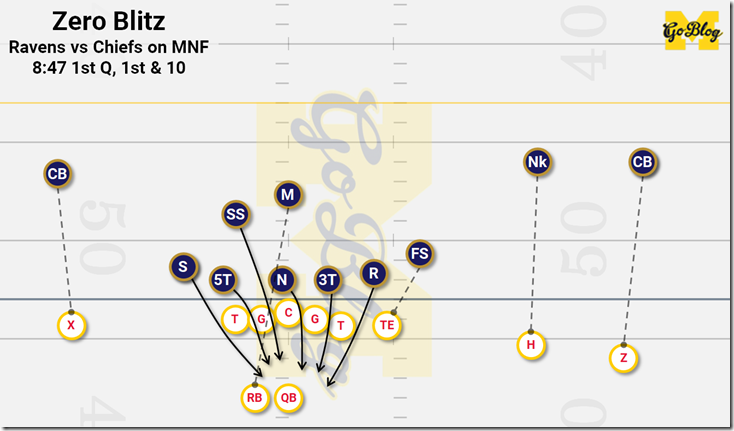
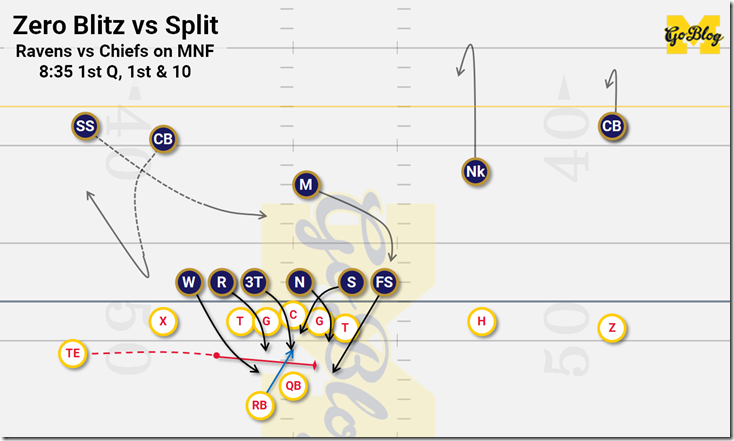
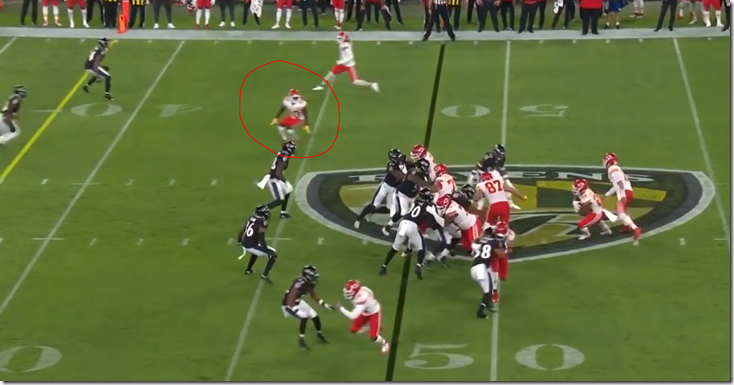
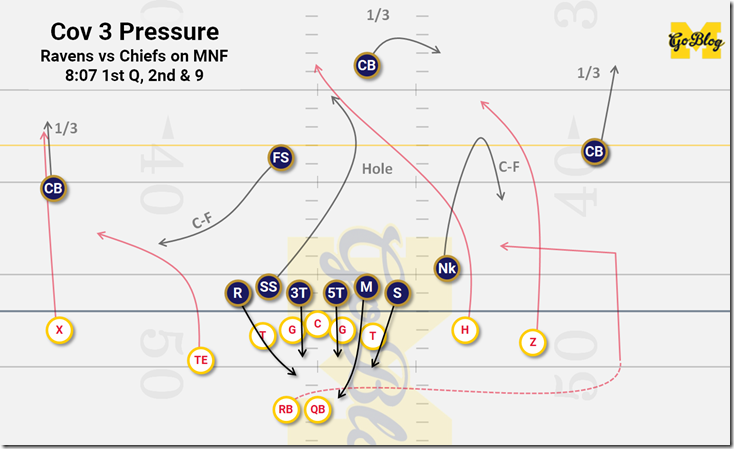
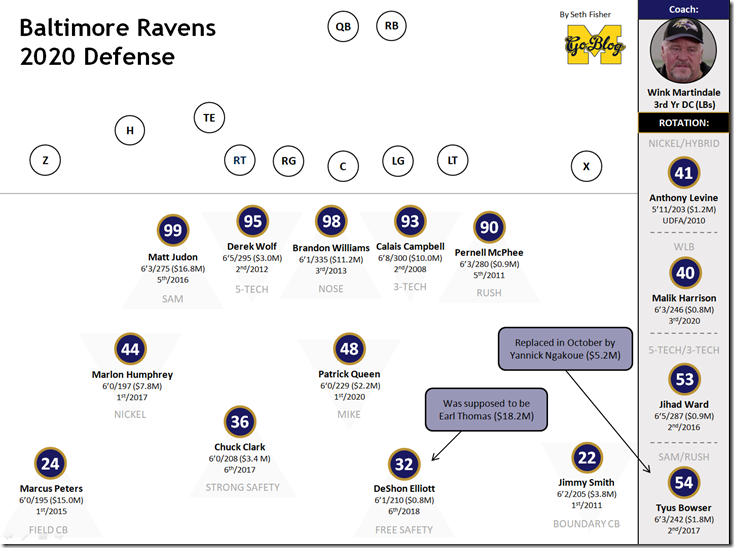
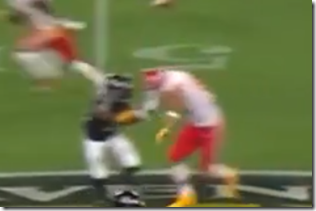
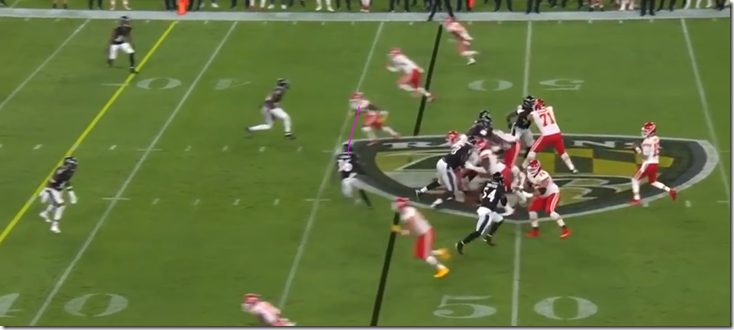
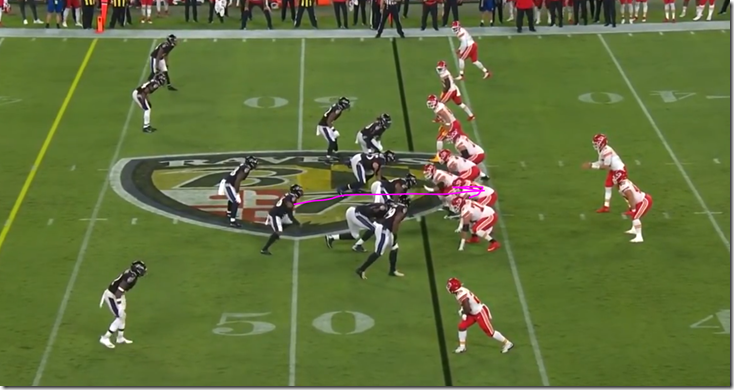
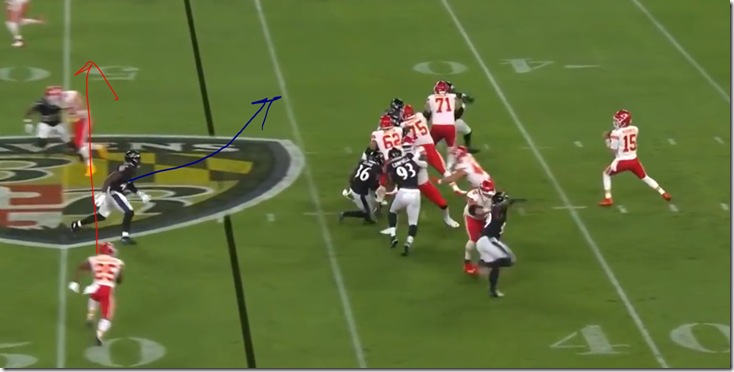
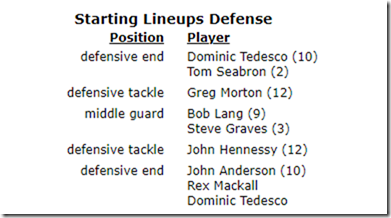
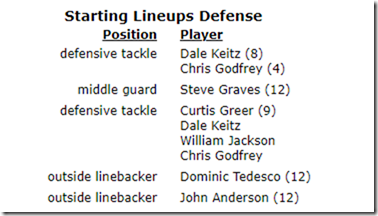

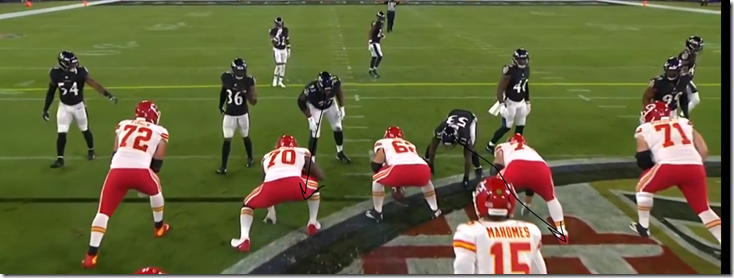
Comments